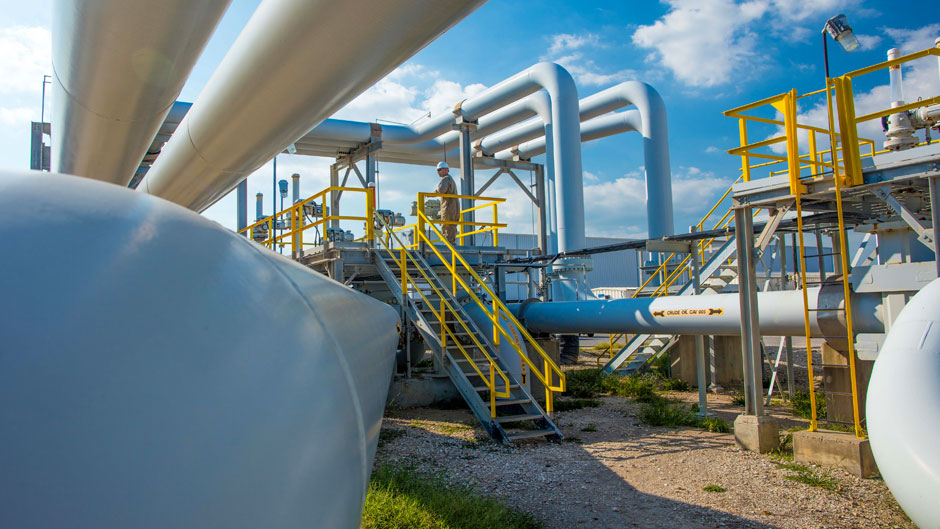The U.S. government has tapped the Strategic Petroleum Reserve (SPR) several times recently and in late March released 180,000 million barrels, one million per day for 180 days—the largest drawdown since the reserve, the world’s largest supply of emergency crude oil, was established in the wake of the mid-1970s oil embargo.
Yet Arun Sharma, a marketing professor and former department chair at the University of Miami Patti and Allan Herbert Business School, and Indraneel Chakraborty, associate professor of finance, both believe the drawdowns will have minimum impact given the size of the market.
Both specialists emphasize the changes in the global oil market since the SPR—a U.S. government complex of four sites with deep underground storage caverns created in salt domes along the Texas and Louisiana Gulf Coasts—was established in 1975.
“At the time, the U.S. was very reliant on the import of foreign oil, and our exports were small,” Sharma explained. “The reason we set up the reserve was if the imports got constrained or restricted, then we would have enough reserves.”
The SPR was formed following the 1973 Arab Israeli War, a conflict won by Israel with backing from the United States. Arab countries levied an oil embargo on the U.S. in retaliation for that support.
“The price of oil rose from $3 a barrel before the embargo to $12 a barrel in 1974. Even after the embargo was lifted in 1974, the cost of oil continued to rise and was at $33 in 1980,” Chakraborty pointed out.
He indicated that U.S. production—now at 11 million barrels per day compared to the 10 million barrels per day that Russia produces—has doubled during the period 2008-2020.
Oil consumption and production declined in 2020 with the pandemic and has been rising slowly since.
Will the reserve drawdowns impact the rising price of fuel in the U.S.?
Chakraborty acknowledged that the general capacity of the SPR is about 714 million barrels. The U.S. consumes some 20 million barrels daily. So, at the current levels of 553 million barrels (before the 180-million-barrel reduction) the reserve would provide for about 20 days of oil.
“At some point the U.S. will bring its level back up to the maximum, but how much is needed in SPR is a nebulous question,” he said.
Sharma was more pointed, saying the impact is negligible.
“At the end of the day, there’s a lot of oil in various systems,” Sharma said. “Not only do we have strategic reserves, but other countries do, too. And nowadays the production of oil is very diversified,” he added. “It’s good that the SPR is there because sometimes we need it in times of hurricanes, etc., but it’s not that critical anymore.”
The price of oil globally—and also in the U.S.—is critically connected to demand and supply, both experts emphasize.
“Sometimes we have demand constraints which reduce the consumption of oil, and sometimes supply constraints as with Russia [sanctioned for its invasion of Ukraine], which increases the price of oil or in the other direction,” Sharma said.
“The restrictions have impacted the price of oil of course, but not as much as we thought it would because China’s economy [constrained because of virus outbreaks] has reduced its consumption,” he added.
Sharma also noted that it’s unclear what U.S. oil demand will look like because it is so tied to the vibrancy of the economy.
Oil consumption is always at the edge, he explained, it may go up 5 percent or down.
“And that little bit at the edge is what makes all the price difference,” he suggested. “Not that it goes up 100 percent, because supply and demand are so closely matched—but any imbalance will cause a price fluctuation.”
Chakraborty likewise emphasized that oil supply and demand are “precariously balanced.”
He said that “it’s true for any market, but the problem here—following the drop in 2020—is that oil production is responding slowly.” And he added, “Given uncertainty regarding economic conditions and the lead time it takes to add new supply, supply response is lagged.”
Chakraborty compared the SPR to a retirement or emergency hospitalization savings account, one to be used in extreme emergencies.
He pointed out that the world uses approximately 90-100 million barrels per day, so the historically large drawdown of 180 million barrels is essentially two days of global consumption. U.S. consumption is 5 percent per day of the global total.
The real question that will determine oil prices, Chakraborty said, is where the market expects U.S. economy and the world economy to be in a year.

